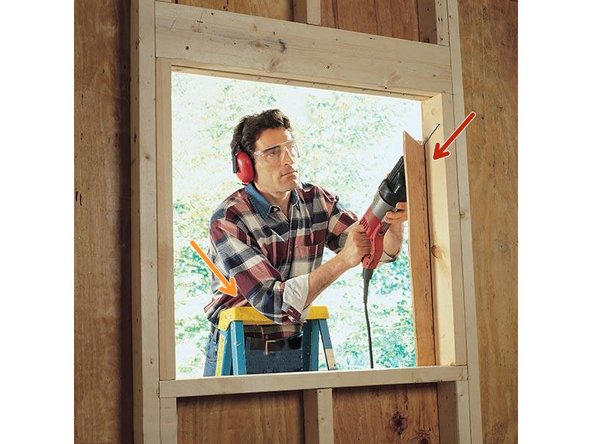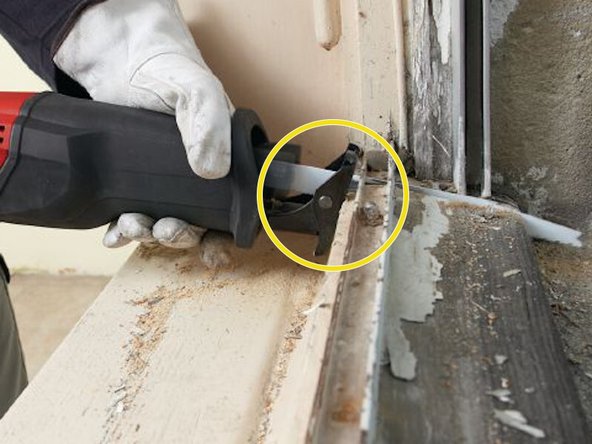Introduction
A reciprocating saw is a type of machine-powered saw in which the cutting action is achieved through a push-and-pull motion of the blade. This guide will teach you the proper safety procedures when using a reciprocating saw, identifying its basic features and how to operate it.
Images by: Andy Gregory, Ace Hardware, Family Handyman, Amazon
-
-
1. Blade
-
2. Trigger
-
3. Battery Pack
-
4. Blade Lock
-
5. Forward Grip
-
6. Handle
-
7. Battery Release
-
8. Rocker Shoe
-
-
-
Wear eye protection at all times when using the reciprocating saw
-
Ear protection is also recommended as the saw is very loud
-
Hold the saw firmly with both hands when making cuts. This saw will vibrate a lot during operation and must be held tightly to avoid being dropped during operation
-
Keep long hair tied back, remove jewelry such as necklaces or bracelets, and roll up long sleeves when using the saw
-
Do not operate close to other workers since the saw vibrates a lot and because the blade on this saw is unguarded
-
Secure the material being cut with the reciprocating saw
-
Do not bind, twist or pinch the blade when making cuts with the reciprocating saw. Binding the blade may cause the blade to break or possibly jerk the saw from the user's hands
-
-
-
Select the correct blade for the type of material being cut with the reciprocating saw ask lab staff for appropriate blade
-
Metal cutting blades have finer teeth, and wood cutting blades have longer teeth
-
Use a shorter blade when possible, as longer blades are more flexible which is undesirable when using a reciprocating saw
-
-
-
Secure the workpiece to a flat surface
-
Use at least two clamps if possible
-
Make sure the shorter edge of the workpiece is overhanging so as not to bind the blade
-
Watch where your feet are placed so they will not be hit by falling scrap material
-
-
-
Mark lines to be cut, have cuts checked prior by lab staff
-
Position yourself in a steady position prior to making cuts with the reciprocating saw
-
If the reciprocating saw has a variable speed control, set on fast speed for cutting wood and on slow speed for cutting metals
-
Place the rocker shoe against the work when cutting with the reciprocating saw
-
Do not place excessive pressure on the saw while cutting
-
If the saw requires excessive pressure to cut, it is in need of a new blade. Change the blade before continuing the use the saw
-








